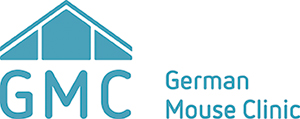The GMC housing and health monitoring concept
Animal housing is performed in strict accordance with directive 2010/63/EU and the local government. All mice are housed in individually ventilated caging (IVC) systems (Sealsafe plus, GM 500, Tecniplast, Buggugiate, Italy) under specific pathogen-free conditions (GMC) with a maximum cage density of five adult mice per cage. IVC systems operate with positive pressure. All mice receive autoclaved wood chips (Lignocel select fine, J. Rettenmaier & Soehne GmbH, Rosenberg, Germany) and paper stripes (Arbocel crinclets natural Rettenmaier & Soehne GmbH) as bedding and nesting material, enrichment (red houses), irradiated standard diet for rodents (Altromin 1314, Altromin Spezialfutter GmbH, Lage, Germany) and sterile-filtered tap water ad libitum. Mice are transferred to new cages in laminar cage changing stations in weekly intervals. Light is adjusted to a 12h/12h light/dark cycle with a 10 min period of dimmed light to simulate sunrise/sunset; temperature and relative humidity are regulated to 22 ± 2° C and 55 ± 10 %. Access via air sluices is restricted by an electronic key system, and it is mandatory to wear personal protective equipment (autoclaved trousers and shirts, dedicated shoes, surgical masks, hair bonnets and gloves). Health monitoring is based on quarterly exhaust air dust PCR analysis [1] for all FELASA-listed agents by a commercial diagnostic laboratory [2].
[1] Miller M, Brielmeier M. Environmental samples make soiled bedding sentinels dispensable for hygienic monitoring of IVC-reared mouse colonies. Lab Anim 2018, 52(3):233-239.
[2] Mähler M, Berard M, Feinstein R, Gallagher A, Illgen-Wilcke B, Pritchett-Corning K, Raspa M: FELASA recommendations for the health monitoring of mouse, rat, hamster, guinea pig and rabbit colonies in breeding and experimental units. Lab Anim 2014, 48(3):178-192.

